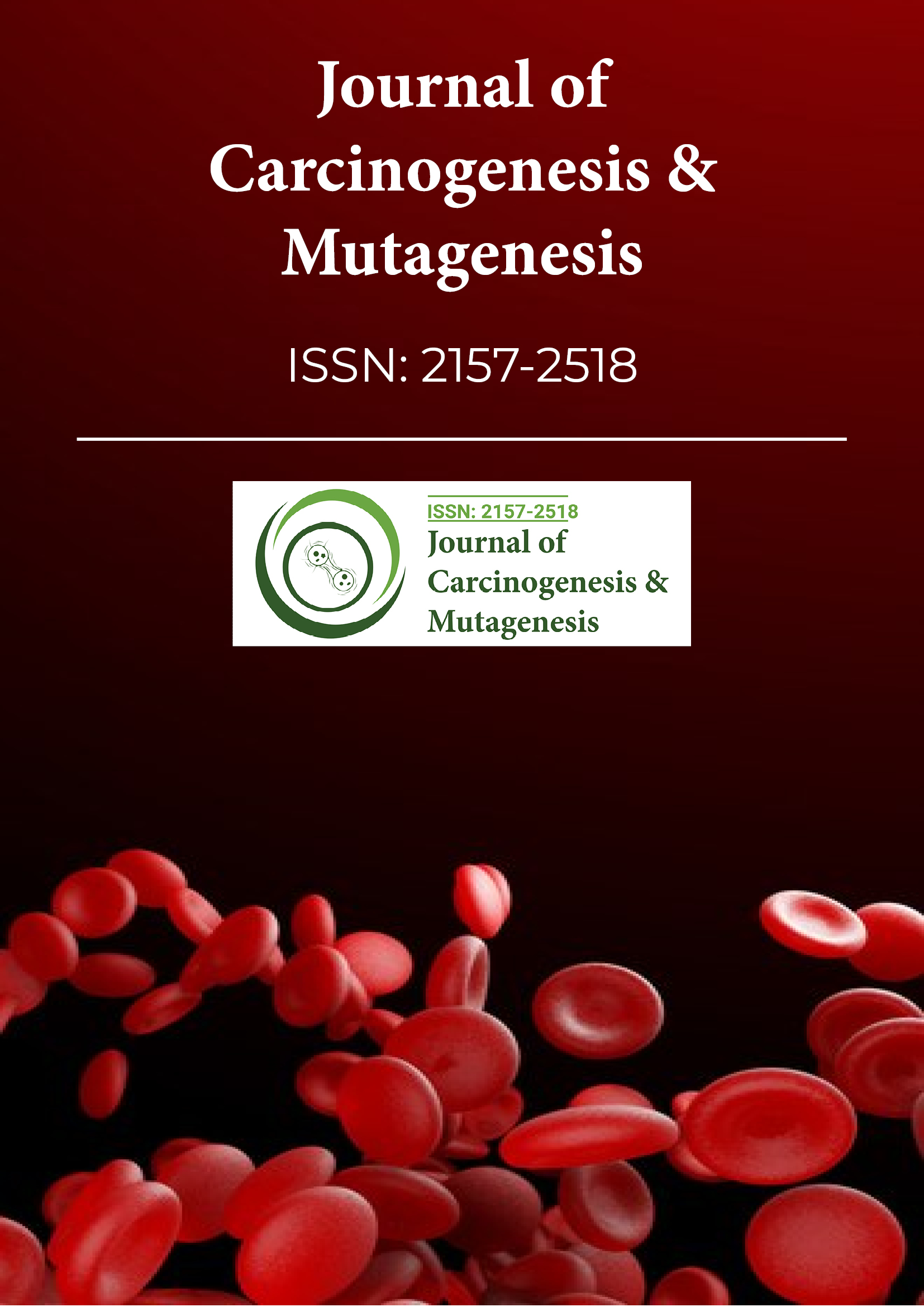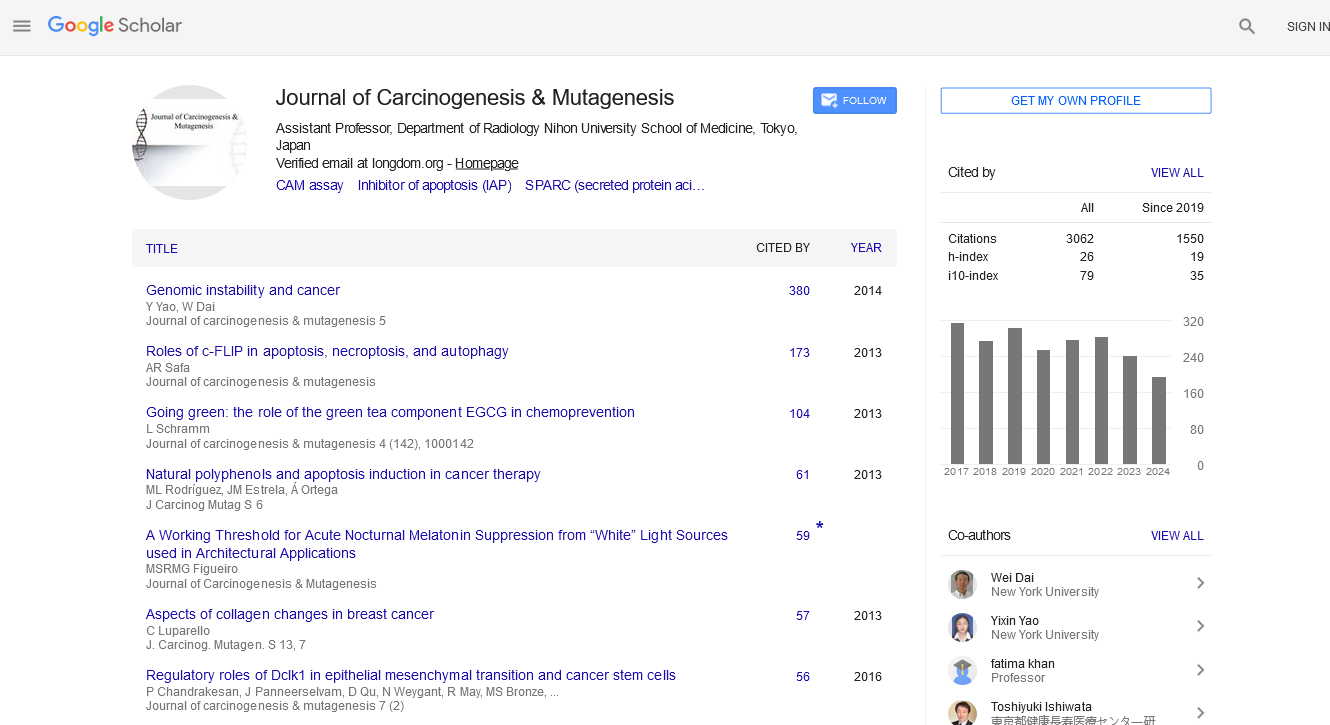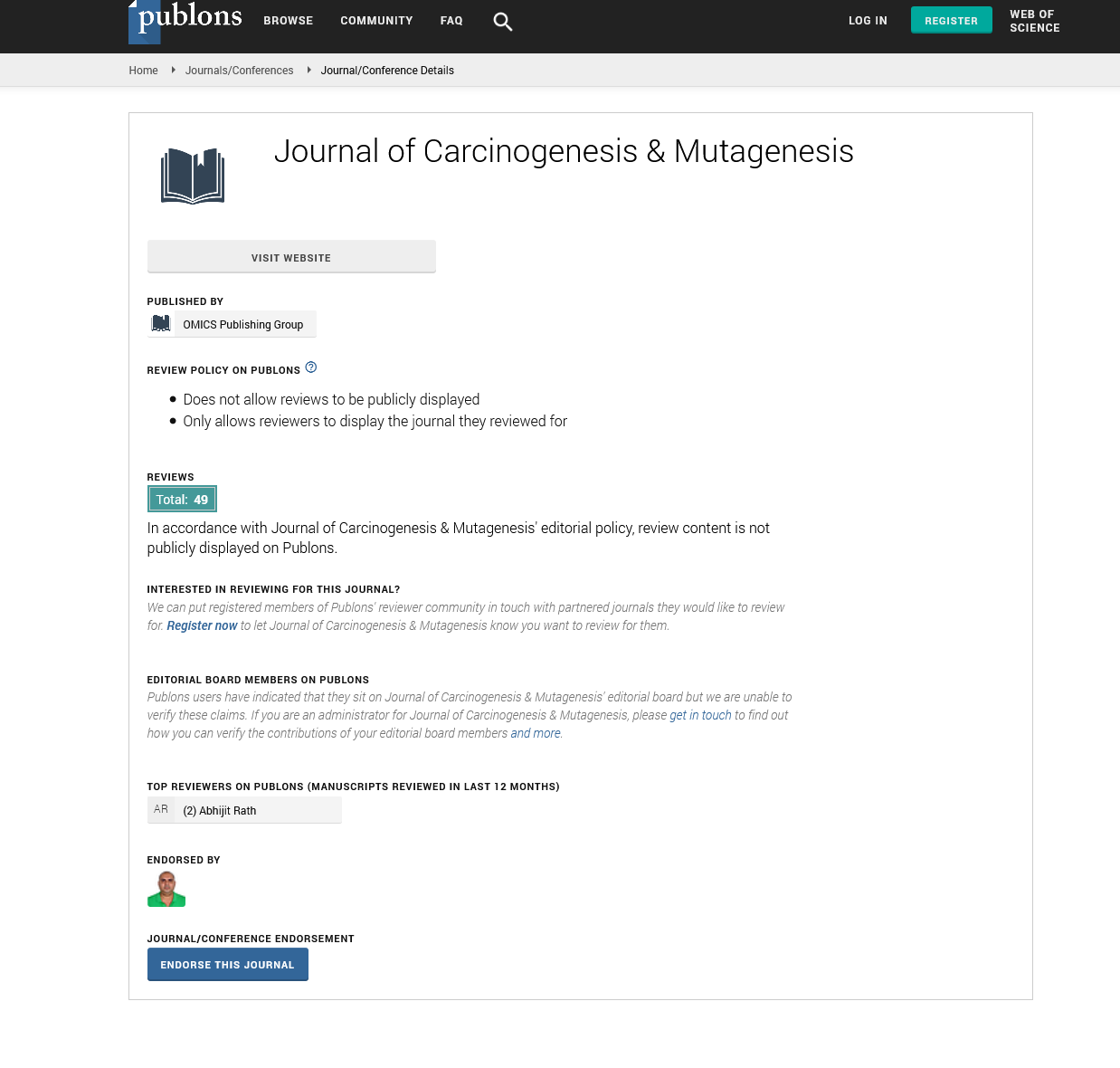Indexed In
- Open J Gate
- Genamics JournalSeek
- JournalTOCs
- Ulrich's Periodicals Directory
- RefSeek
- Hamdard University
- EBSCO A-Z
- OCLC- WorldCat
- Publons
- Geneva Foundation for Medical Education and Research
- Euro Pub
- Google Scholar
Useful Links
Share This Page
Journal Flyer

Open Access Journals
- Agri and Aquaculture
- Biochemistry
- Bioinformatics & Systems Biology
- Business & Management
- Chemistry
- Clinical Sciences
- Engineering
- Food & Nutrition
- General Science
- Genetics & Molecular Biology
- Immunology & Microbiology
- Medical Sciences
- Neuroscience & Psychology
- Nursing & Health Care
- Pharmaceutical Sciences
Commentary - (2025) Volume 0, Issue 0
Comprehensive Mutation Profiling in Carcinogenesis Using Next Generation Sequencing
Joanna Wirkus*Received: 30-Apr-2025, Manuscript No. JCM-25-29374; Editor assigned: 02-May-2025, Pre QC No. JCM-25-29374 (PQ); Reviewed: 16-May-2025, QC No. JCM-25-29374; Revised: 23-May-2025, Manuscript No. JCM-25-29374 (R); Published: 30-May-2025, DOI: 10.35248/2157-2518.25.S50.001
Description
Next-Generation Sequencing (NGS) has revolutionized the landscape of cancer research, offering unprecedented resolution and depth in the analysis of genetic and epigenetic alterations that drive carcinogenesis and mutagenesis. Unlike traditional sequencing technologies, NGS allows for the simultaneous sequencing of millions of DNA fragments, enabling comprehensive analysis of entire genomes, exomes, transcriptomes, and targeted regions in a single experiment. This powerful technology has accelerated the identification of novel cancer-associated mutations, structural variants, gene fusions, and epigenetic modifications, significantly enhancing our understanding of tumor biology and the molecular mechanisms underlying cancer initiation, progression, and therapeutic resistance.
One of the key applications of NGS in cancer research is Whole-Genome Sequencing (WGS), which provides a complete view of both coding and non-coding regions of the genome. Through WGS, researchers have uncovered mutational signatures that are characteristic of specific carcinogenic exposures, such as tobacco smoke, ultraviolet radiation, or chemotherapy. These signatures not only reveal the etiology of mutations but also provide biomarkers for exposure and response to treatment. Similarly, Whole-Exome Sequencing (WES) focuses on the protein-coding regions of the genome and has been instrumental in identifying driver mutations in oncogenes and tumor suppressor genes, including TP53, KRAS, BRAF, and PIK3CA. These findings have informed the development of targeted therapies and personalized treatment approaches in clinical oncology.
RNA Sequencing (RNA-seq), another powerful NGS-based technique, has provided insight into gene expression patterns, alternative splicing events, and the role of non-coding RNAs in cancer. RNA-seq has revealed how transcriptional deregulation contributes to tumorigenesis and has helped identify gene expression signatures that classify cancer subtypes, predict prognosis, and guide therapeutic strategies. Furthermore, the integration of RNA-seq with other NGS platforms, such as Chromatin Immunoprecipitation Sequencing (ChIP-seq) and Assay for Transposase-Accessible Chromatin using Sequencing (ATAC-seq), has facilitated the study of cancer epigenomics. These integrative approaches have illuminated how epigenetic dysregulation, including DNA methylation and histone modifications, influences gene expression and genome stability in cancer cells.
NGS has also played a critical role in the characterization of tumor heterogeneity and clonal evolution. By sequencing multiple regions of a tumor or analysing Circulating Tumor DNA (ctDNA), researchers can track the emergence of resistant sub clones and monitor disease progression in real time. Liquid biopsy approaches using NGS have opened new avenues for noninvasive cancer diagnostics, allowing for the early detection of mutations and monitoring of minimal residual disease. These advancements are particularly valuable for cancers that are difficult to biopsy or are prone to rapid evolution under treatment pressure.
In the realm of mutagenesis research, NGS has enabled high-throughput screening of mutational outcomes induced by various environmental and chemical mutagens. By comparing mutation spectra across different conditions and experimental models, researchers can infer the mutagenic potential of substances and elucidate mechanisms of DNA damage and repair. This knowledge is critical for cancer prevention efforts, risk assessment, and the regulation of carcinogenic agents.
Despite its transformative impact, the application of NGS in carcinogenesis research is not without challenges. Data interpretation remains complex due to the vast amount of information generated, and distinguishing between driver and passenger mutations requires robust computational and functional validation. Moreover, standardization of protocols, data sharing, and ethical considerations in the use of genomic data remain areas requiring continued attention.
In conclusion, next-generation sequencing has become an indispensable tool in cancer research, providing comprehensive insights into the genetic and molecular basis of carcinogenesis and mutagenesis. As NGS technologies continue to evolve, they promise to further enhance our ability to decode the cancer genome, personalize therapeutic interventions, and ultimately improve patient outcomes through more precise and informed approaches to cancer diagnosis and treatment.
Citation: Wirkus J (2025). Comprehensive Mutation Profiling in Carcinogenesis Using Next Generation Sequencing. J Carcinog Mutagen. 16:001.
Copyright: © 2025 Wirkus J. This is an open-access article distributed under the terms of the Creative Commons Attribution License, which permits unrestricted use, distribution, and reproduction in any medium, provided the original author and source are credited.


